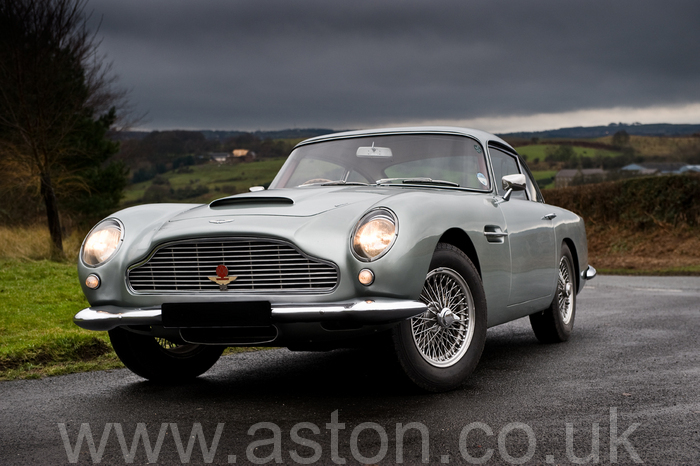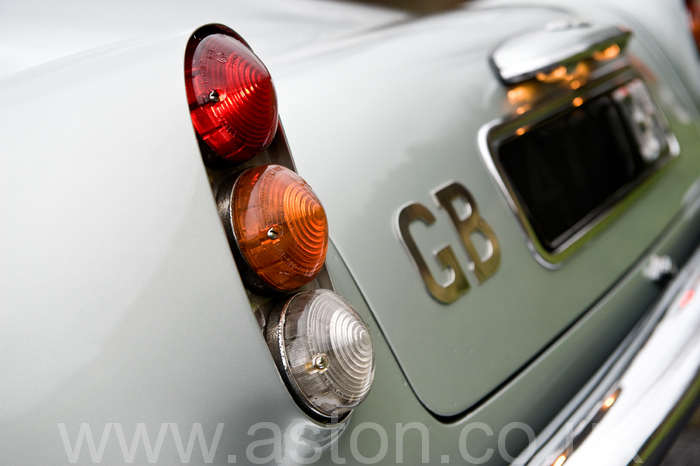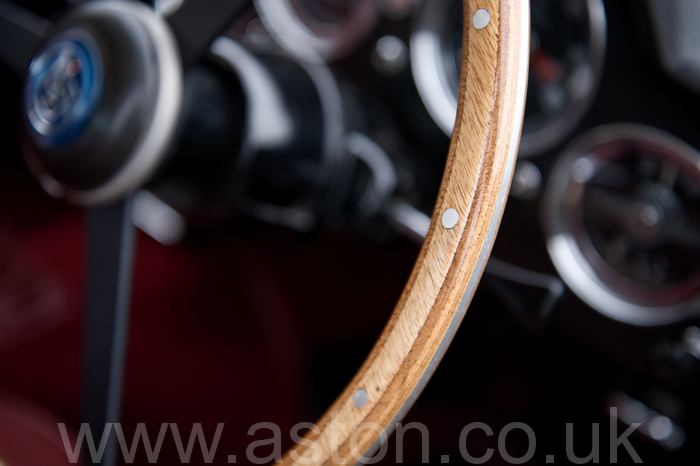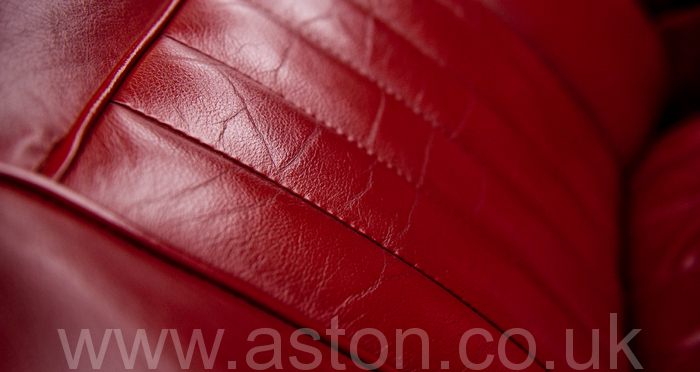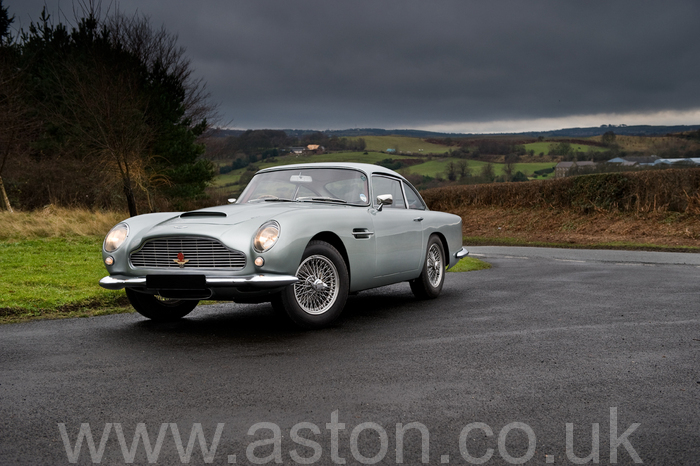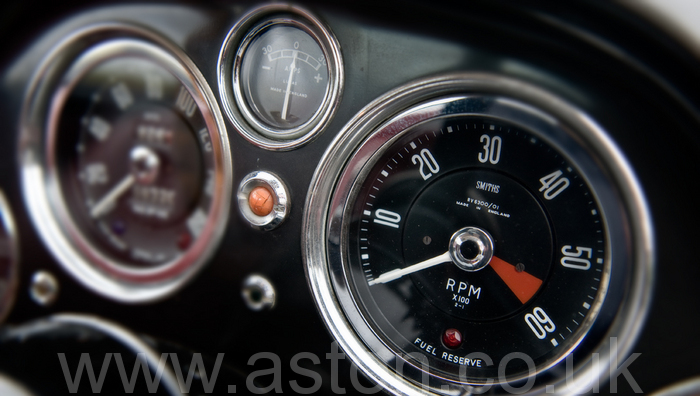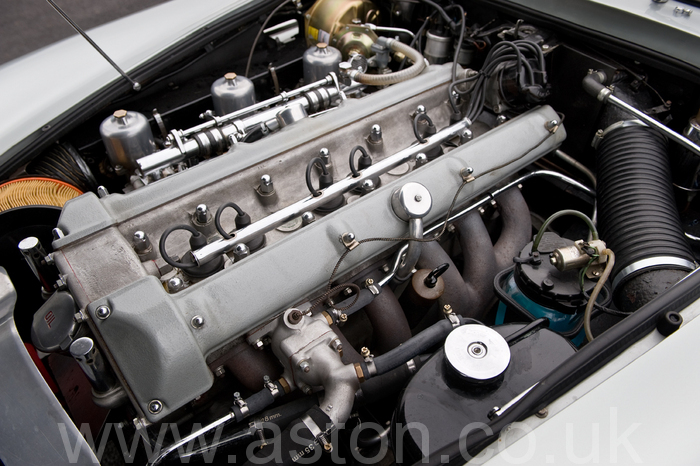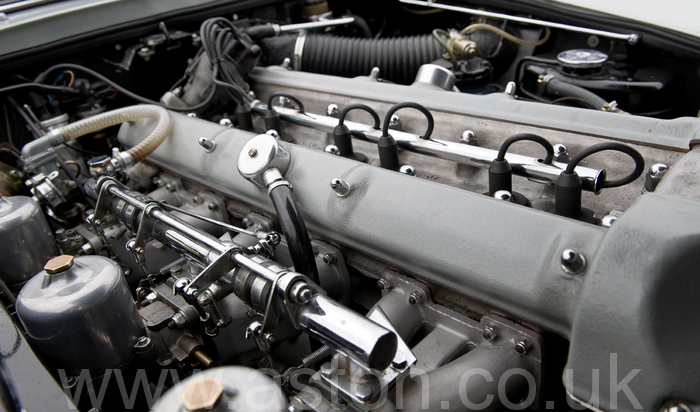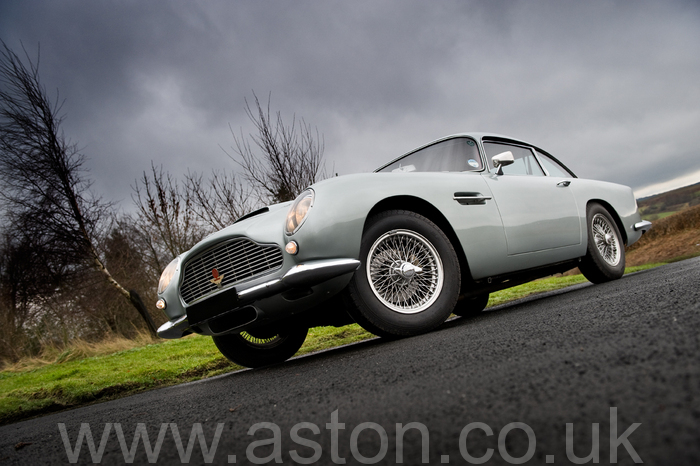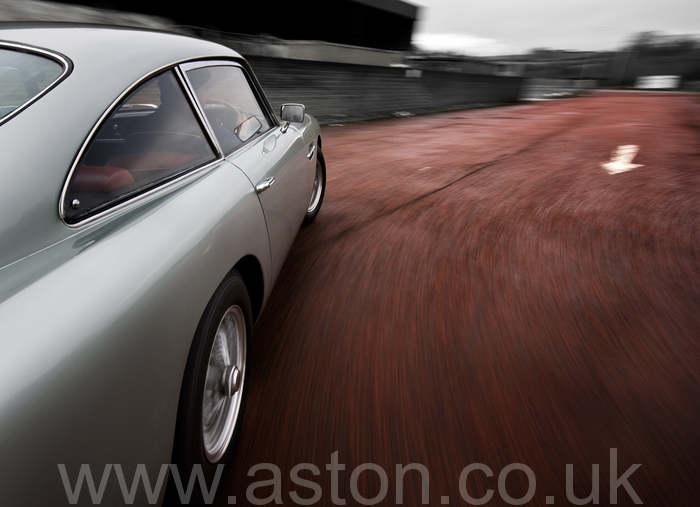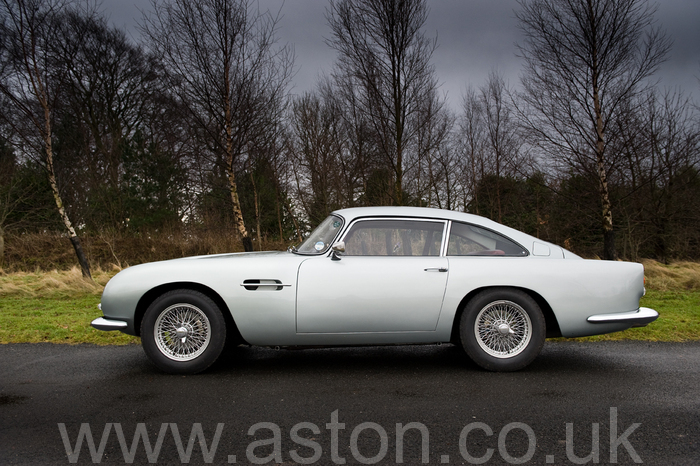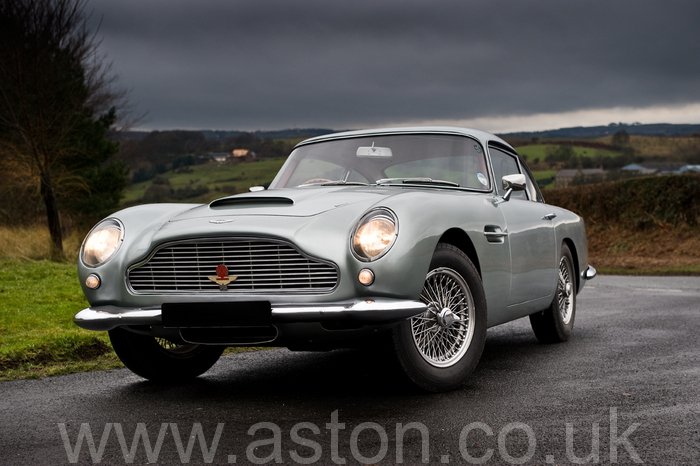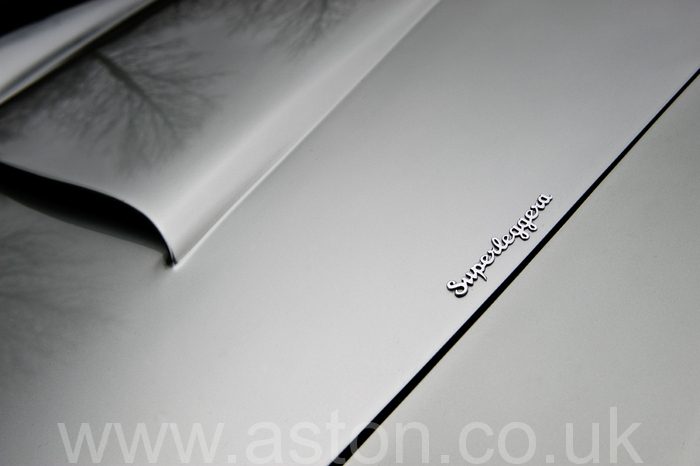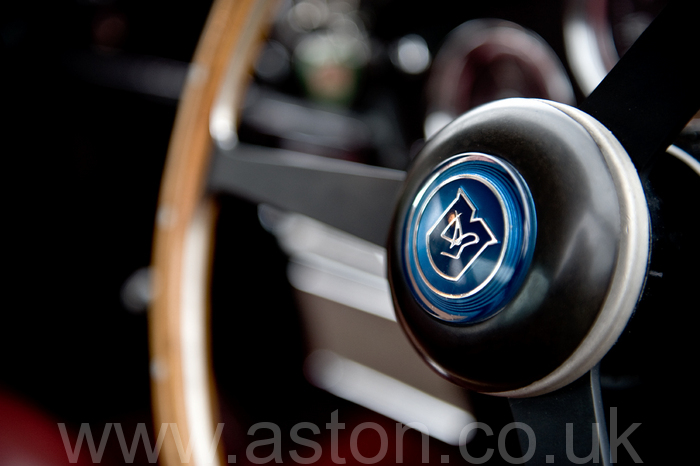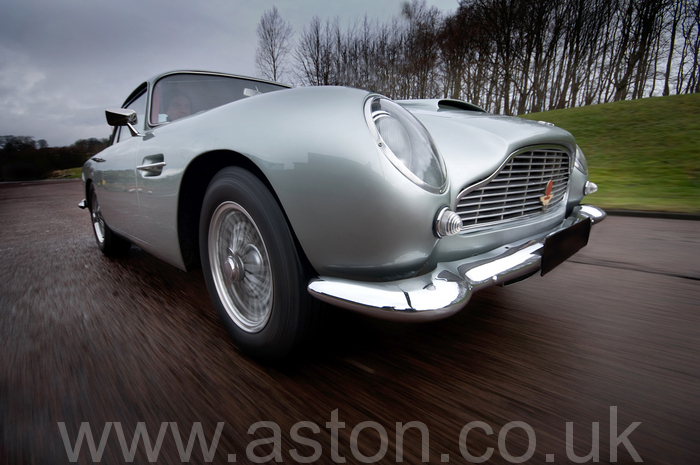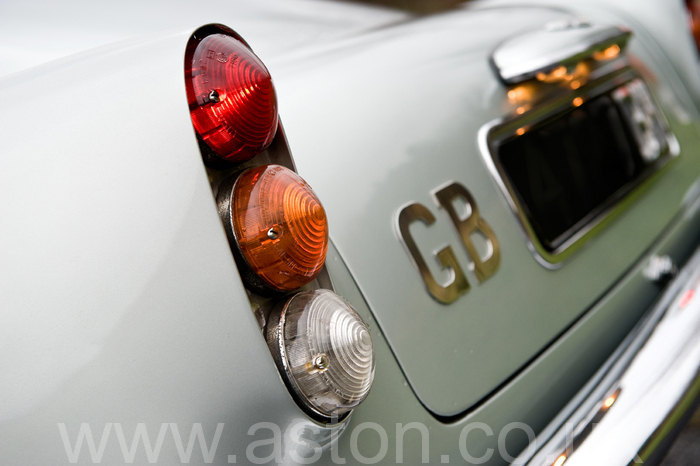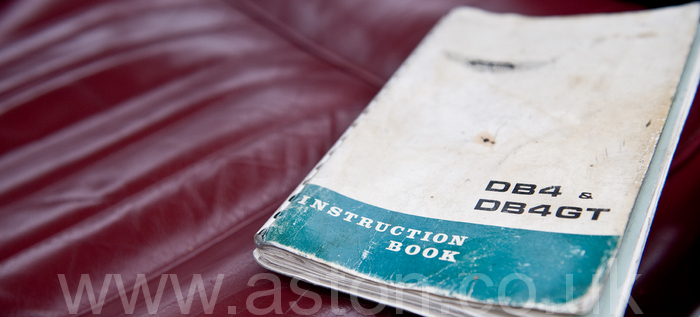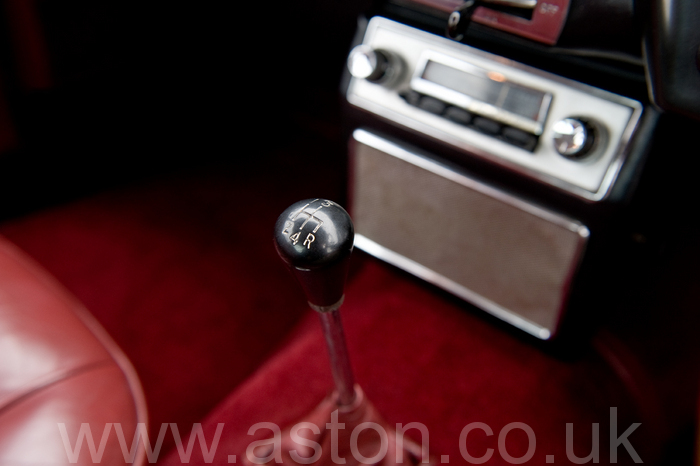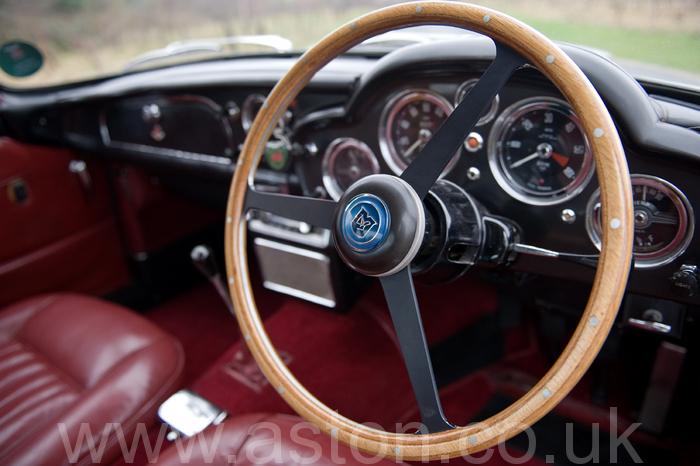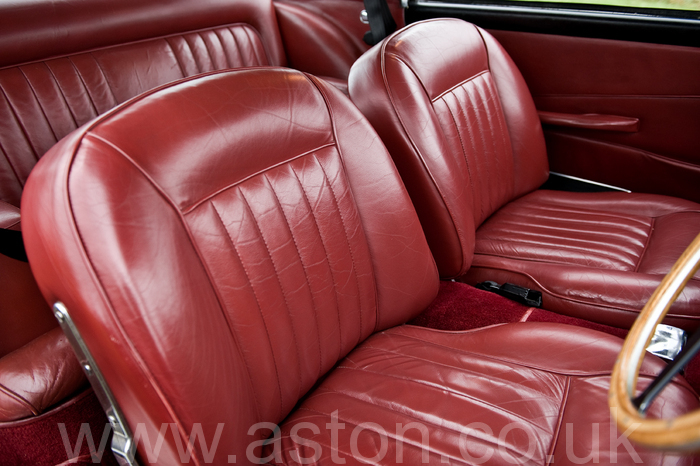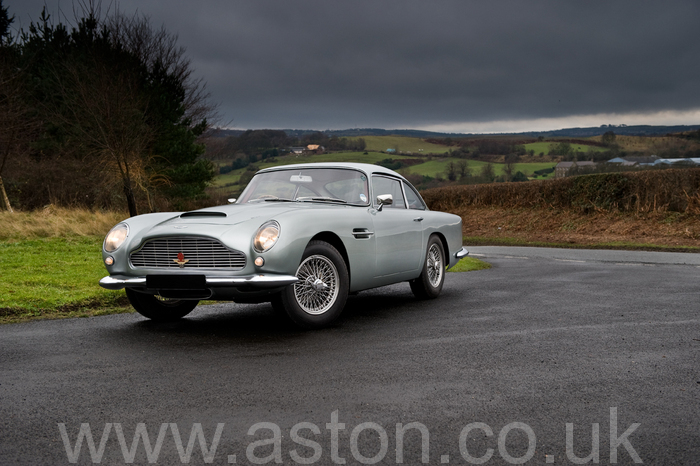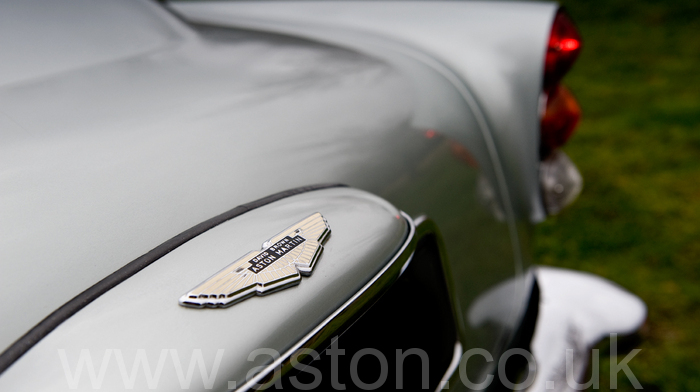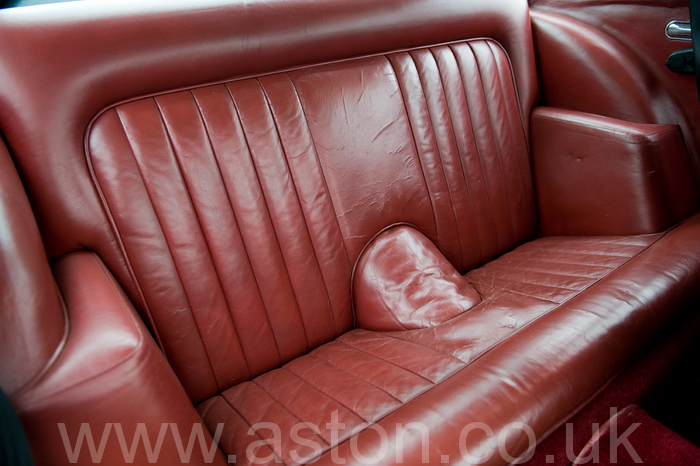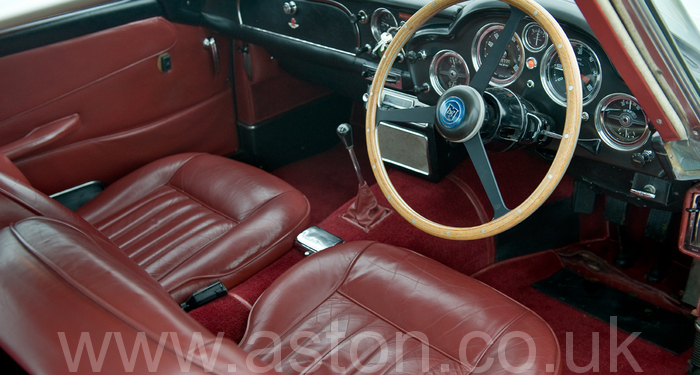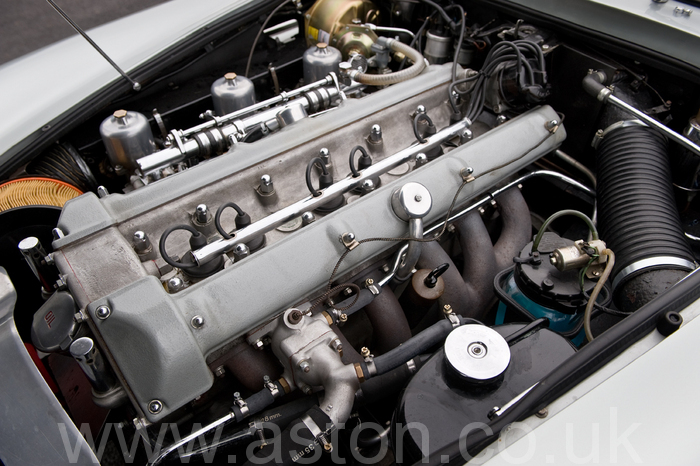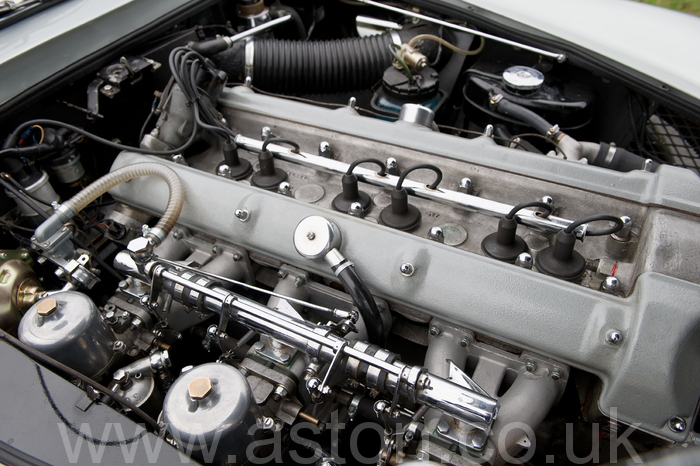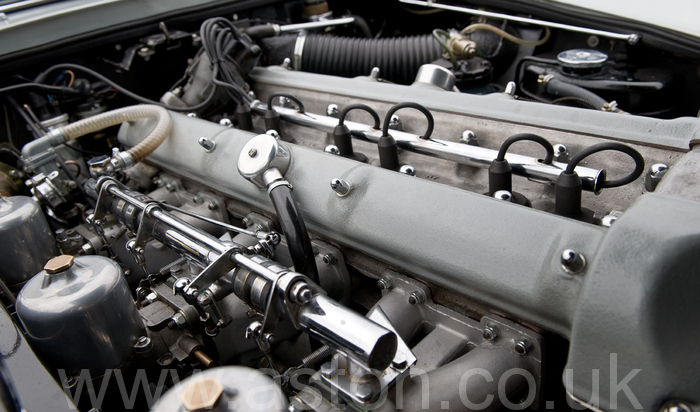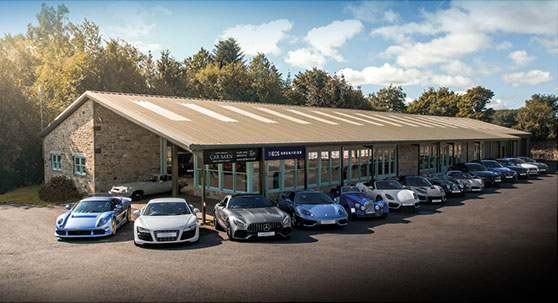We have acquired recently a very tidy DB4 Series 5 Vantage saloon. It is fitted with the standard 4 speed manual gearbox.. In shadow grey with a red leather interior, there is plenty of evidence of careful and meticulous maintenance, with a major service having recently been undertaken by Aston Martin Works Service. First reg in January 1963, it currently has an odometer mileage of 59, 306 miles, which is not warranted.
The car was the subject of a body and chassis restoration by Four Ashes Garage in or around 1990. In 1998 the engine was given a comprehensive overhaul and upgraded to full unleaded spec as a 4.2 litre. In 2000, the brakes and suspension were overhauled and later in 2002, the car was given another comprehensive and major service.
In 2007, the car was the subject of more significant expenditure undertaken by a Swiss classic car restoration and service centre, amounting to approximately £35,000, to bring the car up to a good mechanical state, with major work to suspension and brakes, interior, some panel work, paint and a thorough and comprehensive service. In 2008, the car was checked over and serviced by Aston Martin Works Service.
The car is sound and in good repair structurally, with a lightly patinated red interior. Paintwork is sound. The car has been the subject of a thorough health check, the engine has good oil pressure and compressions and the car performs with vigour. Unusually, the car comes with 15 inch lightweight aluminium rimmed wire wheels.. The front brakes have also been upgraded with DB5 standard Girling discs and callipers.
RHD or LHD the choice is yours!
As one of the biggest specialists dealing in Classic Aston Martins, we are finding an increasing demand for LHD cars and the availability of such cars is extremely small. That this is the case is perhaps not surprising bearing in mind that only some 10% of those Aston Martins manufactured up until the introduction of the DB7were sold as original LHD cars. As a result, we are finding an increasing demand for LHD conversions, which we are very well placed to meet.
Many prospective customers may well think that changing the specification of any rare car, such as an Aston Martin, would detract from both its originality and value. This may be the case if major changes are envisaged to the appearance or there is a major deviation from the original in some major mechanical item, such as fitting a Jaguar engine into a DB4. Indeed, as was originally found when many Austin Healeys and E-Types were re-imported back to the UK and converted to RHD, that values did to some extent suffer, largely as a result of the quality and original appearance of those converted deviating significantly from the original RHD car. No more.
On the contrary, we are routinely now finding that valuable Aston Martins that have been sold recently to overseas customers normally driving on the right, are being bought and converted to LHD and that a premium is often achieved. As a result the value of a car converted from RHD to LHD is as much and often more than the cost of the conversion.
There are however, a number of clear provisos in making this claim. First and foremost, the conversion has to be such that the car is precisely as it would have been had it been manufactured from new as a LHD car. The second key proviso is that the quality of the conversion has to be flawless and that the car has the precise appearance of an original LHD car.
Over the last year or so, the demand for these LHD conversions has risen very substantially, particularly the DB4, 5 and 6 cars and increasingly now, the V8 models. We have remanufactured or can acquire just about all of the items that are required to do the conversion, be it DB4, 5, 6 chief amongst which are the Dashboards. As will be seen, the quality and original appearance is extremely good and anyone contemplating a RHD to LHD conversion can be assured that the conversion process is quite straightforward, taking no more than a few weeks to do and that we are very experienced at doing them.
If a LHD conversion is of interest get in touch,. We can certainly advise and can readily provide a very competitive quotation for all the work involved
Model history - Announced at the Paris Motor Show in October, 1958, the DB4 ushered in a radical departure for Aston Martin in its determination to be a force in the production of true world beating manufacturers of GT cars of the very highest performance. The DB4 is still one of the most beautiful and iconic cars of all time. Instantly recognised as an Aston Martin, the classical and perfect proportions of the early series DB4s has never been bettered. It is a style that looks right from every angle and it is not without reason that it has set the tone for every subsequent Aston Martin to this day.
On its debut in October 1958, the DB4 was hardly fully developed, nor was Aston Martin ready to start series production and it was not until later in 1959 that series manufacture started in earnest.
The DB4 evolved over 5 distinct series, each bringing useful improvements, as lessons learnt became known from owners’ service experience. By the time the fifth and final series started in production in l963, the DB4 had evolved into a very reliable, comfortable and rapid Grand Tourer of the highest performance.
Series 1 cars – Distinguished by a front opening bonnet and frameless door windows. When built, they lacked any oil cooler and the size of the sump and hence restricted engine oil capacity led to many early engines succumbing to severe bearing damage when subjected to sustained high engine speeds However, it remains the purest and best proportioned version of all the DB4 variants built.
Series 2 cats – Carried over the rear body design and proportions of the Series 1, but came with rear opening bonnet, significant engine modifications (which all the Series 1 cars were retrofitted with), uprated brakes and framed door windows. Options introduced included overdrive and an oil cooler.
Series 3 cars – Essentially similar in specification to the Series 2, but with many minor detail improvements to the engine and chassis The rear light clusters were recessed and given a chromed backing plate.
Series 4 cars – The Series 4 cars saw the introduction of a triple SU carburettor Vantage engine option, giving a useful increment in performance with no discernible penalty in fuel consumption. The Vantage also ushered in faired-in headlights similar to those used in the DB4 GT and an oil cooler became standardised equipment but was not always fitted!!! Nearly all DB4 Convertibles were built to the Series 4 specification until superseded by the later Series 5.
Series 5 cars – the final variant of the DB4, the rear body was lengthened by 3 inches and the roofline altered to give the rear seats additional headroom. Nearly all Series 5 cars came with Vantage engines and faired headlights. The general specification now included revised gearing and smaller 15 inch wheels.
The Db4 offered here has a long term history of sound and meticulous maintenance, with many original features. In good repair, the car is ready for immediate use and is an excellent example of the marque. Recommended for early inspection. Should the new owner wish, it can be readily converted to LHD and upgraded with electric power assisted steering. It is already unleaded compatible.






